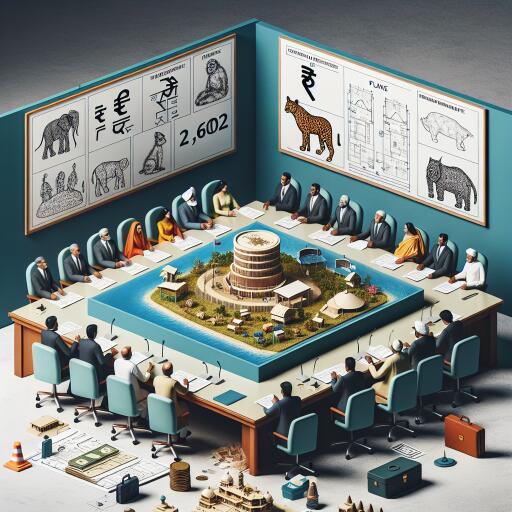
Cabinet Approves ₹2,602 Crore Wildlife Habitats Development Scheme
The Union Cabinet has given its approval to the Integrated Development of Wildlife Habitats scheme for the 15th Finance Commission cycle, allocating a substantial ₹2,602.98 crore towards the initiative.
This decision was made during a meeting chaired on September 11, with the Ministry of Environment releasing a statement confirming the approval. The scheme is centrally sponsored and encompasses critical components such as Project Tiger, Project Elephant, and the Development of Wildlife Habitats.
The scheme is designed to enhance technological interventions across various thematic areas in tiger and other wildlife habitats over the coming financial years.
Funding Allocation
According to the financial outlay, the Centre has allocated ₹1,575 crore for Project Tiger, ₹182.58 crore for Project Elephant, and ₹845.4 crore for general Wildlife Habitat Development.
Commitment to Conservation
The government’s continued support for this scheme underscores its commitment to tiger and wildlife conservation, ensuring that ecological protection and economic growth can go hand in hand.
One of the prominent technological tools used in Project Tiger is the M-STrIPES (Monitoring System for Tigers, Intensive Protection, and Ecological Status) mobile application. This app is extensively utilized for collecting field-level ecological data. During the 5th cycle of the All-India Tiger Estimation in 2022, this app played a pivotal role.
The All-India Tiger Estimation itself is a technologically intensive exercise, with camera traps being widely deployed across the nation’s tiger habitats. Artificial Intelligence (AI) is also employed for species-level identification. Conservation genetics has seen significant usage, with standard operating procedures (SOP) issued for translocating tigers based on their genetic composition.
Technological Advancements for Wildlife
The Development of Wildlife Habitat component supports the proposed Project Dolphin by provisioning equipment such as Remotely Operated Vehicles (ROVs) and passive acoustic monitoring devices for counting dolphins and assessing their habitats. Project Lion will also be reinforced, following the activities outlined in the document titled “Lion @ 2047: A Vision for Amrut Kaal.”
Managing Human-Wildlife Conflicts
Under Project Elephant, the human-elephant conflict is a significant focus area. Information and communication technology (ICT) interventions, tested on an experimental basis, will now be scaled up as part of this project.
The scheme aims to benefit 55 tiger reserves, 33 elephant reserves, and 718 protected areas along with their broader zones of influence. These forest regions act as a bulwark against the adversities of climate change while ensuring the nation’s water security.
Additionally, the initiative will contribute to the preservation of keystone species like the tiger, elephant, cheetah, snow leopard, and lion. These species serve as crucial indicators of the health of their respective ecosystems.
The renewed focus and substantial investment in the Integrated Development of Wildlife Habitats scheme signify a robust effort towards preserving India’s rich wildlife heritage through cutting-edge technology and sustainable practices.





Leave a Reply